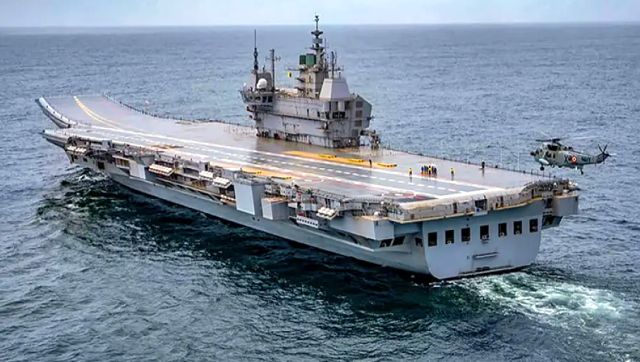- Views: 4K
- Replies: 18
)
NEW DELHI - India is set to begin construction on its third aircraft carrier soon, Defense Minister Rajnath Singh revealed in an interview with The Tribune. This new carrier will be similar in size to the recently commissioned INS Vikrant, a 45,000-ton behemoth.
But the Minister didn't stop there. In a bold declaration, he stated, "We will not stop at that (three carriers). We will make five, six more." This marks a significant shift in India's naval strategy, with a clear ambition to match the growing maritime power of its neighbors.
Matching China's Naval Ambitions
India's plans appear to be directly responding to China's ongoing expansion of its aircraft carrier fleet. A 2021 US Department of Defense report warned that China aims to have six carriers operational by 2030.China currently has two carriers, Liaoning and Shandong, and recently conducted sea trials of its third, the Fujian, equipped with advanced electromagnetic catapults.
An Arms Race in Asia
India and China are not alone in this naval arms race. Other Asian nations are also investing in aircraft carriers to project power in the region. Japan has converted its helicopter carriers, JS Izumo and JS Kaga, into aircraft carriers capable of operating F-35 fighter jets, and South Korea has plans for a carrier by 2030.India's Aircraft Carrier Legacy
India's history with aircraft carriers dates back to 1961 with the acquisition of HMS Hercules from the UK, renamed INS Vikrant. This carrier played a crucial role in the 1971 India-Pakistan war. A second carrier, HMS Hermes, renamed INS Viraat, served from 1987 to 2017.This ambitious expansion of India's carrier fleet signifies a major step in solidifying the country's naval power. With multiple carriers, India will enhance its ability to project force, protect its maritime interests, and play a more significant role in the Indo-Pacific region.
While the government's commitment to expanding the carrier fleet is clear, the road ahead will be challenging. Building and maintaining aircraft carriers is a complex and expensive endeavor. It will require substantial investment in infrastructure, technology, and personnel training. However, if successful, this ambitious plan will undoubtedly mark a new chapter in India's naval history.
